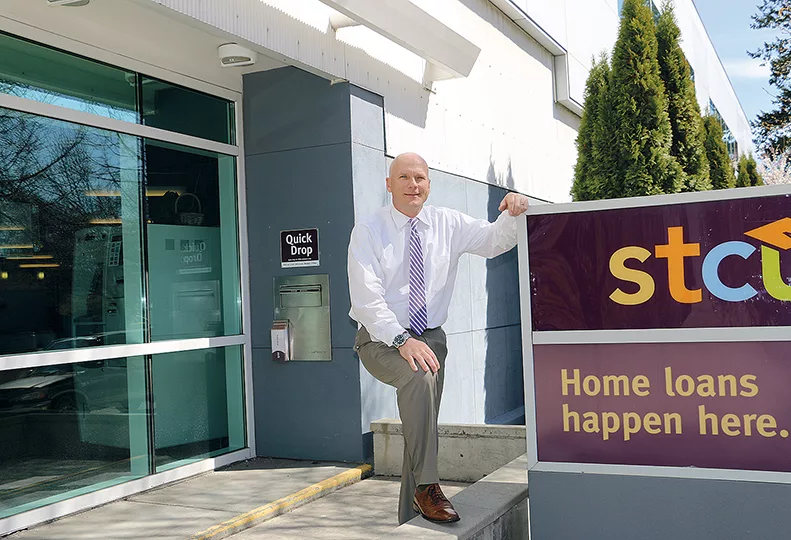STCU enhances its mortgage rate-lock policy
Homebuyers can secure rate before picking house

Spokane Teachers Credit Union, the Spokane area’s largest credit union, has modified its home mortgage interest rate lock policy for conventional loans to make it more borrower-friendly, says Jeff Mularksi, STCU’s real estate manager for origination and sales.
The new policy, which went into effect April 1, allows pre-qualified home buyers to lock in the current interest rate for 60 days before having identified a property or entering into a purchase agreement.
“It allows a buyer to lock an interest rate before they negotiate on a particular property,” Mularski says.
The policy isn’t available on nonconventional loans, such as Federal Housing Administration and U.S. Department of Veterans Affairs loans, Mularski says.
There’s no charge for the 60-day lock, Mularski says. Buyers also have the option to extend to 90 days if the buyer is willing to add 0.125 percent to the 60-day interest rate. For example, if the 60-day interest rate was 4 percent, the 90-day rate would be 4.125 percent.
Under the new policy, STCU also no longer charges a fee for a buyer to “float down” if the interest rate drops during the lock period. If a buyer wants to float down more than once, a fee of 0.5 percent of the loan amount, or $500 minimum, is charged. So for a loan of $250,000, the fee to float down a second time would be $1,250.
However, interest rates have been fairly stable recently, Mularksi says, so most clients don’t need to float down more than once.
What makes STCU’s policy different, Mularski claims, is the no-fee first float down and that it allows buyers to lock the rate before having an identified property. Most homebuyers can’t lock in a rate until a purchase agreement has been signed because a majority of financial institutions go into the secondary market and sell the loan. If the institution then can’t deliver on the loan it sold, it can face penalties, Mularski says, which is why most banks require an identified property before a rate can be locked.
“I can’t say we’re the only financial institution in America to do it, but it’s very unique here,” he says.
STCU doesn’t sell most of its loans, but instead retains and services them itself, Mularski says.
“Our asset-management strategy allows us to have the flexibility to offer this feature,” he says.
Mularksi says that government-backed loans, in addition to being exempt from the lock policy, are sometimes sold, but the vast majority of STCU’s loans stay within the institution.
Being able to lock in an interest rate while still searching for a property can help relieve some of the stress of buying a home, Mularski says. He says STCU chose to offer the free lock for 60 days to give customers time to shop and purchase a home. The home must close within the lock period for the rate to be valid, he says.
“Sixty days provides our members with ample time to secure the property,” he says.
However, buyers need to be savvy about where they’re at in the home-buying process before they lock, Mularski says.
“If you’re six months away from a purchase, it really wouldn’t be advantageous to lock,” he says, adding that 60 days seems to be a good middle ground for locking.
“Sixty days is a sweet spot; a month to shop and a month to let the loan come together,” he says. “Once a property is identified, things move in earnest.”
If prospective buyers don’t find a home within the lock period, they can reapply for it, as long as their credit standing hasn’t changed, Mularski says. If the buyer’s credit is still good, a lock can be applied for the current interest rate, but he says that doesn’t happen often.
For the future, Mularski says STCU will focus on evaluating how popular the new policy is with customers.
“We’ll see how well it catches on,” he says.
Related Articles
Related Products

_c.webp?t=1763626051)

